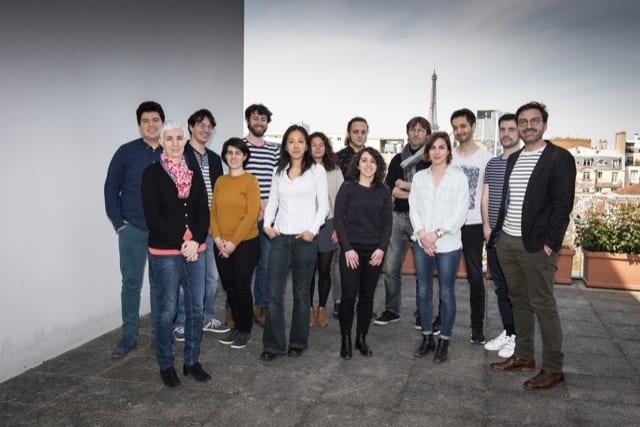Posted By: Sara Cullinan, PhD, Deputy Editor, AJHG
Each month, the editors of The American Journal of Human Genetics interview an author of a recently published paper. This month we check in with Lluis Quintana-Murci (@quintanamurci) to discuss his paper “Impact and Evolutionary Determinants of Neanderthal Introgression on Transcriptional and Post-Transcriptional Regulation.”

AJHG: What prompted you to start working on this project?
Lluis: My laboratory is interested in the evolution of human populations and their long-standing relationship with infectious agents; half of the lab thus works on population genetics questions and the other half focuses more on population/systems immunology. In the context of this project, it all started back in 2016, when we found that Neanderthal introgression has affected innate immunity genes as a whole, and that some innate immunity genes (e.g., the TLR1/6/10 cluster) display extremely high levels of Neanderthal ancestry (Deschamps et al. Am J Hum Genet, 2016).
Later that year, we also found that Neanderthal introgression has been pervasive among regulatory variants (eQTLs), in particular those involved in responses to viral stimuli including influenza (Quach et al. Cell, 2016). The next natural question was then to explore how Neanderthal-introgressed variants in the genomes of non-Africans have affected more generally transcriptional and post-transcriptional regulation, focusing on promoters, enhances and miRNA-mediated regulation, in different tissues and cell types.
AJHG: What about this paper/project most excites you?
Lluis: Several things. First, although Neanderthal introgression has had relatively little effect on miRNA-mediated regulation, a mechanism that in general tolerates little variation and is highly evolutionary constrained, a few Neanderthal variants in a few miRNAs can exert a massive impact on downstream transcriptional programs. In general, I am fascinated by the fine-tuned “smart” way miRNAs function.
Second, I am excited about our results of enhancers, in particular the enrichment in Neanderthal ancestry we find in enhancers that are active in T cells (yes, sorry, I have a biased interest in all immune-related processes). What is even more interesting is that the excess of Neanderthal ancestry we observe in T cell enhancers is not due to increased Neanderthal introgression. Instead, it results from a higher human-Neanderthal divergence at these elements. This may reflect past adaptation in the Neanderthal lineage for this type of enhancers.
AJHG: Thinking about the bigger picture, what implications do you see from this work for the larger human genetics community?
Lluis: This work highlights once more the potential benefits of admixture between our ancestors and other human forms, such as Neanderthals or Denisovans. The latter were adapted to their environments, whereas our ancestors entering Europe or Asia were less adapted. In this context, acquiring advantageous variation through archaic admixture is a fascinating topic, with obvious consequences for the larger human genetics community. Indeed, such archaic admixture increasingly is being shown to affect molecular phenotypes such as gene expression or mechanisms of gene regulation (e.g., this study) and more generally, organismal phenotypes such as traits and diseases (e.g., skin pigmentation, sleeping patterns, allergies) in present-day human populations.
AJHG: What advice do you have for trainees/young scientists?
Lluis: Be open while doing research, be curious, be rigorous, exchange a lot with other trainees and PIs, read a lot, and MAINLY, have fun and be passionate! Meaning both in your working and non-working life. Enjoy the work, do not suffer from it! For me, this is rule number one. If you follow this rule, great findings will follow…and, yes, a bit of luck also helps.
AJHG: And for fun, tell us something about your life outside of the lab.
Lluis: I like to garden (actually, I can spend hours gardening), to bike, and, increasingly, to run. These three things really empty my mind and recharge my batteries. Also, I do need to go at least once per year to Mallorca (where I was born). Having lived there until I was 20 gave me a handicap for life: my need for sun and sea (and I live in Paris…). There’s nothing that relaxes me more than getting into the turquoise Mediterranean water and swimming!
I also love art exhibitions, almost exclusively modern art, and pop if possible! I spent last summer in NYC on a mini-sabbatical at Rockefeller University, and I really enjoyed the exhibitions there!
I also like to read. I can compulsively read historical biographies. When I enjoy somebody’s life, I can read 30 books about them even if most of them say the same thing. A recent example is the life of Princess Marie Bonaparte – a psychoanalyst and close friend of Sigmund Freud, whom she helped escape from Nazi Germany. I also love reading about contemporary politics: one of my preferred topics is the so-called “Spanish transition,” the period starting 1975-1980 when Spain transitioned from being under Franco’s non-democratic regime to being the modern, open-minded country that is today. Obviously, I like books about evolution, but then, that is more work-related again…
Lluis Quintana-Murci, PhD, heads the Unit of Human Evolutionary Genetics in the Department of Genomes and Genetics at the Institute Pasteur. He is a first year member of ASHG.
